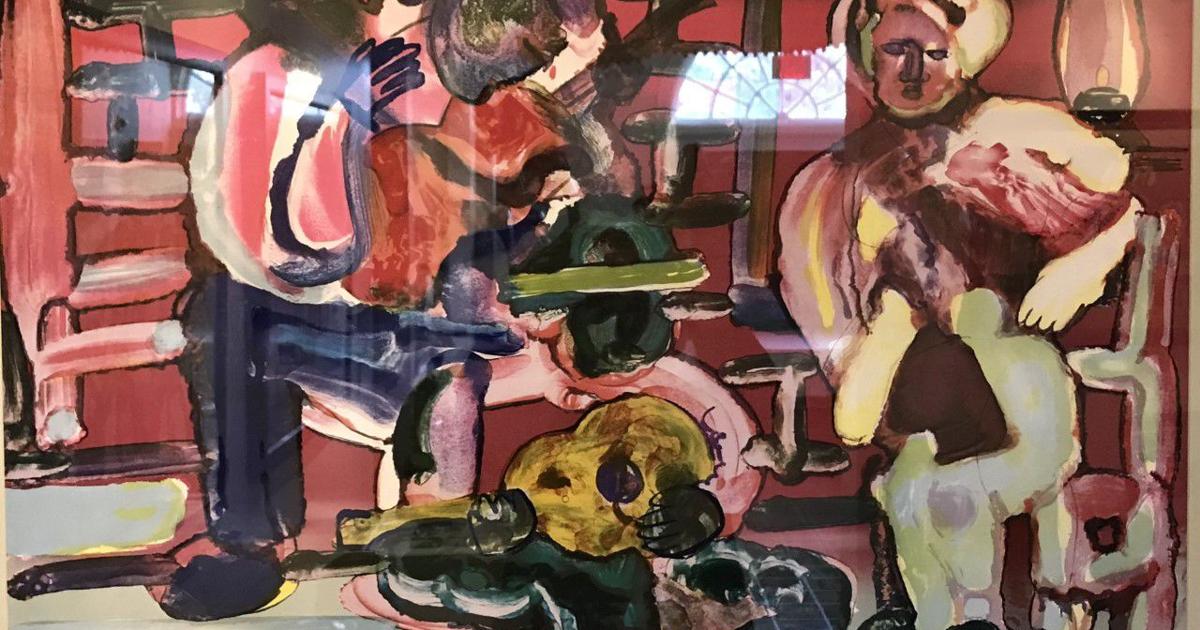Shasta
1940
12H x 9W inches
Diego Rivera
In 1940 Rivera came to San Francisco for what would be his last mural project in the city, Pan-American Unity . Currently housed at City College of San Francisco as a permanent installation, for a time it was in storage and not on public display. During the same period, he created the charcoal sketchentitled Shasta (1940), of large construction machinery that the artist saw near the Mount Shasta dam. He noted the dam and construction equipment as playing a role also in the lives of those living in South Americas.
Diego Rivera was one of the most important artists of the 20th century. He lived and worked for most of his life in Mexico, although he also traveled extensively to such places as Russia, America, France, and Spain. He was (twice) married to the (also extremely famous) Mexican painter Frida Kahlo. Rivera catalyzed the Mexican mural movement in the early part of the century, pushing the national art into a new, socially aware era. He is most famous for his large-scale murals, frescoes, and artistic collaborations that spoke to labor issues, unions, and political radicalism.
Colors:
Related works of genres: » chicano art movement, » social realism, » abstract expressionism, » generación de la ruptura, » modernism
» see more

© » KADIST
Allan Sekula
1973San Pedro is a seaside city, part of the Los Angeles Harbor, sitting on the edge of a channel...

© » KADIST
Kara Walker
2005In her masterpiece 8 Possible Beginnings or The Creation of African-America , Walker unravels just that, the story of struggle, oppression, escape and the complexities of power dynamics in the history following slave trade in America...

© » KADIST
John McCracken
Though not strictly representational, some objects in Untitled (1962) are recognizable: a flower, an egg, a foot...
Related works featuring themes of: » Collective History, » Cultural Commentary, » Figurative Painting, » Focus on the Social Margins, » Cubism, » Mexican
» see more

© » KADIST
Carlos Amorales
2006This work, a large oil painting on canvas, shows a moment from Amorales’s eight-minute two-channel video projection Useless Wonder (2006)...

© » KADIST
Christine Sun Kim
2022Hand Palm Echo 1 is a digital animation based on Christine Sun Kim’s staircase mural at The Drawing Center in New York (10 March – 22 May, 2022)...
Other related works, blended automatically
» see more

© » KADIST
Carlos Amorales
2006This work, a large oil painting on canvas, shows a moment from Amorales’s eight-minute two-channel video projection Useless Wonder (2006)...

© » KADIST
Yoshua Okón
2009Canned Laughter was Okón’s response to an invitation from Ciudad Juárez , Mexico, where artists were asked to create works based on their experience of the city...

© » KADIST
Mario Garcia Torres
2004Mario Garcia Torres imagines cinematic devices to replay stories occasionally forgotten by Conceptual art...
Related works sharing similar palette
» see more

© » ARTS EQUATOR
Weekly Southeast Asia Radar: Rashomon in KL; Burmese cartooning pioneers | ArtsEquator Thinking and Talking about Arts and Culture in Southeast Asia ArtsEquator Radar TRBANPHOTO March 5, 2020 ArtsEquator’s Southeast Asia Radar features articles and posts about arts and culture in Southeast Asia, drawn from local and regional websites and publications – aggregated content from outside sources, so we are exposed to a multitude of voices in the region...

© » KADIST
Yee I-Lann
20207-headed Lalandau Hat by Yee I-Lann is an intricately woven sculpture evoking the ceremonial headdress worn by Murut men in Borneo...
:quality(70)/cloudfront-us-east-1.images.arcpublishing.com/uscannenberg/M45ZZ5XUD5ELFM2NFVJ4VVASYU.jpg)
© » ARTSJOURNAL
Stolen Syrian art funds international terrorism – Why aren’t we talking about it? – Annenberg Media Skip to main content Arts, Culture & Entertainment Stolen Syrian art funds international terrorism – Why aren’t we talking about it? Stories about the trafficking of blood antiquities across an international black market don’t often appear in the average person’s news diet; Stories about the terrorist organizations that these antiquity sales fund do, though...
Related works found in the same semantic group
» see more

© » KADIST
Chloé Quenum
2017The stained glass windows of Chloé Quenum’s Les Allégories evoke the sacred and describe the movement of a rooster in the form of patterns extracted from a wax fabric found in Benin...







